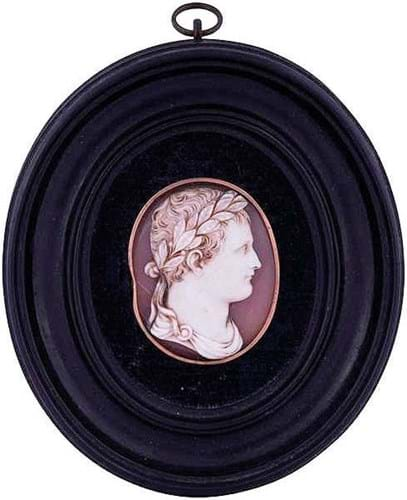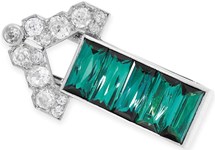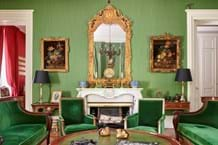
It resided at Blenheim Palace until it was sold by the 6th Duke en bloc at Christie, Manson & Woods in 1875 to David Bromilow (1809-98) of Bitteswell Hall, Leicestershire, for £35,000. The valuation was conducted by ‘the eminent expert Signor Castellani’, the celebrated Italian revivalist jeweller. It was then dispersed piecemeal by Christie’s again in June 1899.
The present whereabouts of some two-thirds of the gems sold in the auction is now unknown, although the Beazley archive in Oxford possesses impressions and electrotype copies of virtually every Marlborough gem as well as the cataloguer’s notebooks. It was these that were published in 2009 as The Marlborough Gems: Formerly at Blenheim Palace, Oxfordshire.
As the market for glyphic art strengthens, some of the ‘lost’ gems are surfacing. Two appeared at UK regional sales in 2019: a sard intaglio ring thought to depict the Roman politician and general Mark Anthony (£36,000 at Cheffins) and a Renaissance period sapphire intaglio carved with the bust of Julius Caesar (£62,000 at Woolley & Wallis).
Another, signed for the celebrated Georgian gem engraver Nathaniel Marchant (1739-1816), emerged at Christie’s (25% buyer’s premium) on June 8 as part of a sale of furniture and chattels from a number of titled UK sources.
Commissioning a Marchant intaglio was expensive and, after he returned from Rome with a big reputation in 1789, subject to a waiting list. In 1792 he published the Catalogue of One Hundred Impressions from Gems engraved by Nathaniel Marchant – listing the various subjects in his oeuvre and the names of the social elite who commissioned them.
The 4th Duke of Marlborough was perhaps Marchant’s most notable early patron. Ten works by, or attributed to, Marchant were in the Marlborough collection. This highly finished example sold on June 8, depicting Nike, goddess of Victory, pouring from a jug into a patera, beside a wreathed altar, is copied from a small Etruscan marble relief in the British Museum. It was acquired at the 1899 sale by Charles Newton- Robinson (1853-1913) and resold again in 1909 when it was bought by an ancestor of the vendor, Hugh Meyer Sassoon (b.1929).
Christie’s estimated it at £3000-5000 – a very attractive number in the light of the £100,000 bid for a Marchant carnelian intaglio ring of the Apollo Belvederes as part of a single-owner collection at Sotheby’s in 2018, or indeed the surprise £39,000 bid for another of a classical female at Tennants in January 2019.
Bidders responded accordingly and it sold at £48,000 (£60,000 including buyer’s premium).
Napoleon’s favourite engraver
The best cameos and intaglios continue to shine at auction. A carved sardonyx cameo depicting Napoleon as a classical emperor sold for £22,000 (estimate £600-800) at a sale of Silver and Object of Vertu held by Chiswick Auctions (25/12% buyer’s premium) on June 11.

A sardonyx cameo depicting Napoleon as a classical emperor by Niccolò Morelli – £22,000 at Chiswick Auctions.
Unknown to the local vendor, who had kept it in a drawer, it was of the period c.1810 and is signed Morelli for the Roman engraver Niccolò Morelli (1771-1830). Measuring 1¾in (4cm) and mounted in gold, it is housed in a later ebonised frame.
Napoleon gave much encouragement to the glyptic arts in France, extending the Prix de Rome to gem engravers from 1805 and fostering a school for students of the subject under Roman-Vincent Jeuffroy of the Paris Mint.
Many gem engravers chose to portray the emperor and his family. However, Niccolò Morelli (whose clients included Francis I of Austria and Count Sommariva) was considered his favourite, and virtually the empire’s official, engraver.
In November 2020, Bonhams offered a cameo believed to be a portrait of Marie, Countess Walewska, (1786-1817), the Polish noblewoman and mistress of Napoleon Bonaparte, who bore him a son in 1810. It was unsold with a guide of £15,000-20,000.














